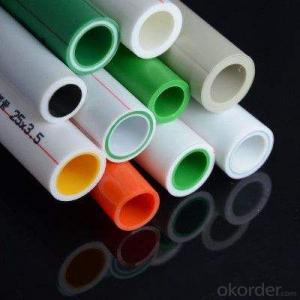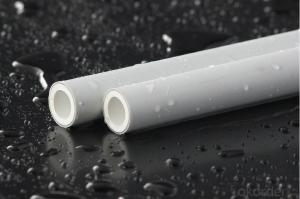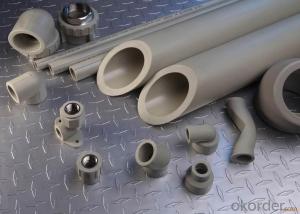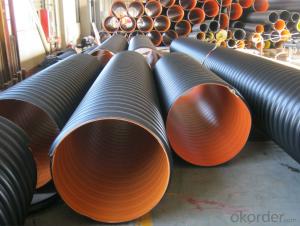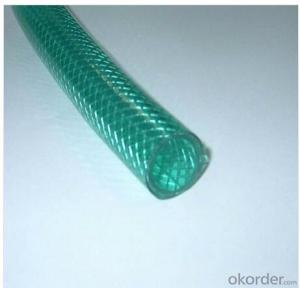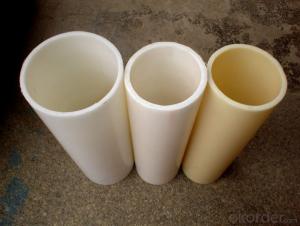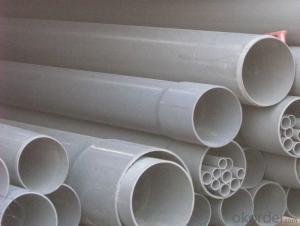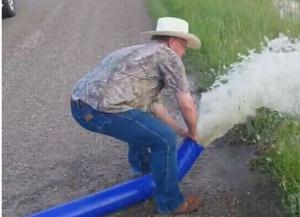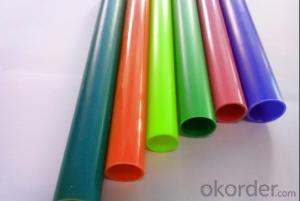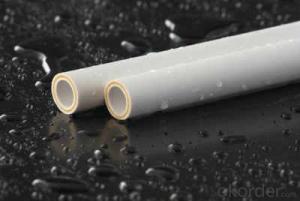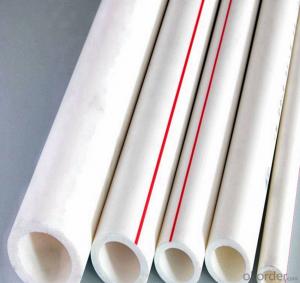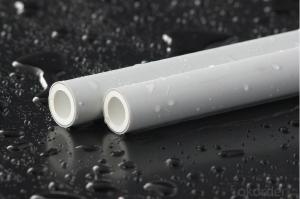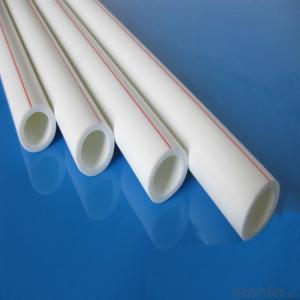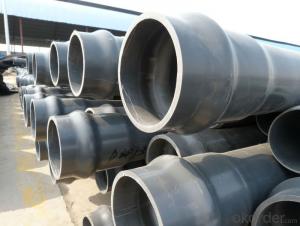Plastic Tubes PVC Pipe for Landscape Irrigation Drainage Application from China Professional
- Loading Port:
- Qingdao
- Payment Terms:
- TT OR LC
- Min Order Qty:
- 100 pc
- Supply Capability:
- 100000 pc/month
OKorder Service Pledge
OKorder Financial Service
You Might Also Like
Product Overview
PP-R (polypropylene random) tube called type three polypropylene pipe and is also called the PP-R pipe or PPR pipe, with energy saving, environmental protection, high strength, corrosion resistance, with smooth inner wall has the advantages of scale, construction and easy maintenance, long service life, widely used in building water supply and drainage, urban drainage city gas and power cable sheath, and industrial fluid transportation, agricultural irrigation construction, municipal, industrial and agricultural fields. The PP-R pipe is made of random copolymerized polypropylene and is extruded into tubes to be molded into tubes
Applications of PPR Pipe (white, gray):
1) Cold and hot water supply systems for civil and industrial constructions, e.g. in residential buildings, hospitals, hotels, school and office buildings, ship building
2) Drinking water systems and food industry pipe works
3) Central air conditioning system
4) Irrigating system for gardens and green houses
5) Public and sport facilities such as swimming pools and stadiums
6) For rainwater utilization systems.
Product Description
Pressure | Size(mm) | Pressure | Size(mm) |
PN1.25MPA | 20*2.0 |
PN1.6MPA | 20*2.3 |
25*2.3 | 25*2.8 | ||
32*2.9 | 32*3.6 | ||
40*3.7 | 40*4.5 | ||
50*4.6 | 50*5.6 | ||
63*5.8 | 63*7.1 | ||
75*6.8 | 75*8.4 | ||
90*8.2 | 90*10.1 | ||
110*10.0 | 110*12.3 |
Product Show
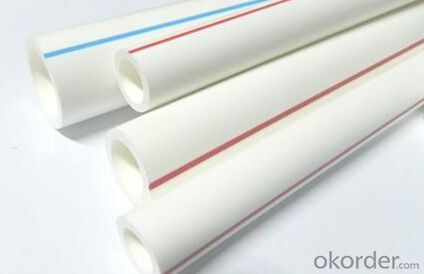
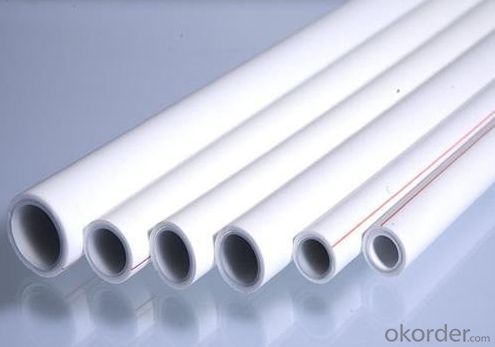
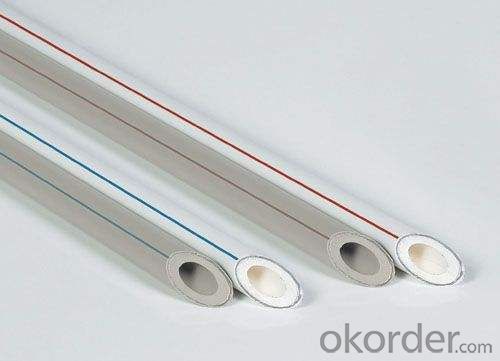
FAQ
Q1: How Can I Get A Sample?
A1: You can get samples by communicate with our export sales.
Q2: How Long Is Delivery?
A2: Delivery time will be30-45days according to order quantity.
Q3: What Is The MOQ?
A3: MOQ depends on different items.
Q4: What Is Our Normal Payments Terms?
A4: Our normal payment terms now is: T/T, L/C or western union, pay
- Q: How do you prevent plastic tubes from deteriorating?
- To prevent plastic tubes from deteriorating, it is important to store them in a cool and dry location away from direct sunlight and extreme temperatures. Regular cleaning and maintenance should also be performed to remove any residue or contaminants that can weaken the material. Additionally, using appropriate cleaning agents and avoiding harsh chemicals can help prolong the lifespan of plastic tubes.
- Q: Are plastic tubes suitable for hygienic applications?
- Yes, plastic tubes are suitable for hygienic applications. They are commonly used in industries such as pharmaceutical, food processing, and medical, where maintaining cleanliness and preventing contamination are crucial. Plastic tubes can be made from materials such as PVC, silicone, or polyethylene, which are resistant to bacterial growth and easy to clean. They can also be designed to meet specific hygienic standards, ensuring the safety and purity of the products being transferred or stored.
- Q: What is the connection between the wires of the PVC?
- According to PVC wire varieties are divided into hard tube, semi hard tube and bellows, according to the characteristics of the line is divided into light, medium, heavy, ultra heavy, according to the wire temperature classification is divided into 25, 05, 90/-25 and so on. The nominal outer diameter specifications of PVC wire tubes are: Phi 16, Phi 20, Phi 25, Phi 32, Phi 40, Phi 50, Phi 63, Phi 75, Phi 110. Among them, PVC pipe specifications for phi 16 and phi 20, generally used for indoor lighting line; PVC tube diameter is Phi 25 specifications, commonly used in the socket or indoor main pipe; PVC pipe diameter is Phi 32 commonly used in the specification into the family line pipe, also for weak line pipe PVC pipe diameter; Specification for phi 50, Phi 63, Phi 75 commonly used in electric disc to indoor line pipe.
- Q: I already have a plastic water line with a on off switch coming up through the floor. I bought a new fridge and when they delivered it they said they could not install it because of the plastic tube- they said I had to change it- I've been to home depot etc and have no clue how to do it because everything else seems to be for the actual installation of a brand new line whereas in this case I need to know how to change the existing line. Any answers??
- You didn't say why it needs to be changed. If it takes a different size tubing, you will be running a new line. If the nut on the end of the tubing is not the correct one, you may be able to buy and install a new one. You would need to go to the parts section at HD. They have all types of connectors.
- Q: What are plastic tubes used for?
- Plastic tubes are commonly used for a variety of purposes such as packaging, irrigation systems, medical applications, laboratory equipment, and construction projects. They provide a lightweight and flexible solution for transporting fluids, gases, or materials in various industries.
- Q: Are plastic tubes tamper-proof?
- No, plastic tubes are not inherently tamper-proof.
- Q: While changing the toilet paper my daughter accidentally flushed down the toilet the inner rod that goes through the cardboard tube to keep the roll in the holder. Unfortunately it’s large enough to cause a blockage so I need to get it out. It’s also made of hollow plastic, and will float – so the fact that I can’t see it means it is at least on the other side of the U-bend. A wire hook won’t help, there’s nothing to hook on to. How can I get it out?
- Take the whole toilet off the floor and turn it upside down. OR .............raise your arm above your head, shake your hand from side to side, and wave good bye !!
- Q: i have to know, because otherwise the hoover is rendered completely useless, the bottle cap is the same size as the hoover tube and i do not have a stick or long object long enough with which to poke it out :(please help meunfortunately, the hoover tube is plastic :( regrettably majority of said tube is plastic and flexible...this darned cap! therefore cannot be heated up, as the hoover will melt..and i can't afford another one!so hanything else anyone can suggest would be greatly appreciatedthe cap is stuck quite far up, but in a solid part of the plastic, im not sure blowing would dislodge it as sheer hoover sucking power seems to do nothingHELP PLEASE!
- Oh I had this same issue. Some of the methods I tried. Broom handle Mop handle Fork spoon knife the clothes pole from my cupboard Taking off the end of the hoover pipe. There's these 2 0r 3 bits you need to push in in order to get it off. It's real hard to do. Takes 2 people. Good luck. That's the most annoying thing in the world.
- Q: Are plastic tubes suitable for pharmaceutical dispensing?
- Yes, plastic tubes are suitable for pharmaceutical dispensing. They are commonly used in the pharmaceutical industry due to their excellent chemical resistance, durability, and ability to maintain product integrity. Plastic tubes also offer versatility in terms of size, shape, and closure options, making them convenient for dispensing various pharmaceutical products such as creams, ointments, and gels. Additionally, plastic tubes are lightweight, cost-effective, and provide tamper-evident features, ensuring the safety and quality of the dispensed medications.
- Q: inner tubes and tire. I'm looking for some advice about what to do next.
- Your tire might the the culprit. Feel along the inside of the tire for abrasions or holes. Feel along the side wall of the rim. Lastly take note of where the holes are on the inner tube. You got 2 ways of doing it. pumping up the tube and putting it in a bucket and searching for bubbles, mark area with tape or with white out. You can also pump up the tube and just feel for air coming out. The first works good on tiny holes, and the second doesn't work so well with tiny holes. You could be pinching tubes as you replace them. So once you figure out how you are getting the flats fixing the cause is easier.
Send your message to us
Plastic Tubes PVC Pipe for Landscape Irrigation Drainage Application from China Professional
- Loading Port:
- Qingdao
- Payment Terms:
- TT OR LC
- Min Order Qty:
- 100 pc
- Supply Capability:
- 100000 pc/month
OKorder Service Pledge
OKorder Financial Service
Similar products
Hot products
Hot Searches
Related keywords
